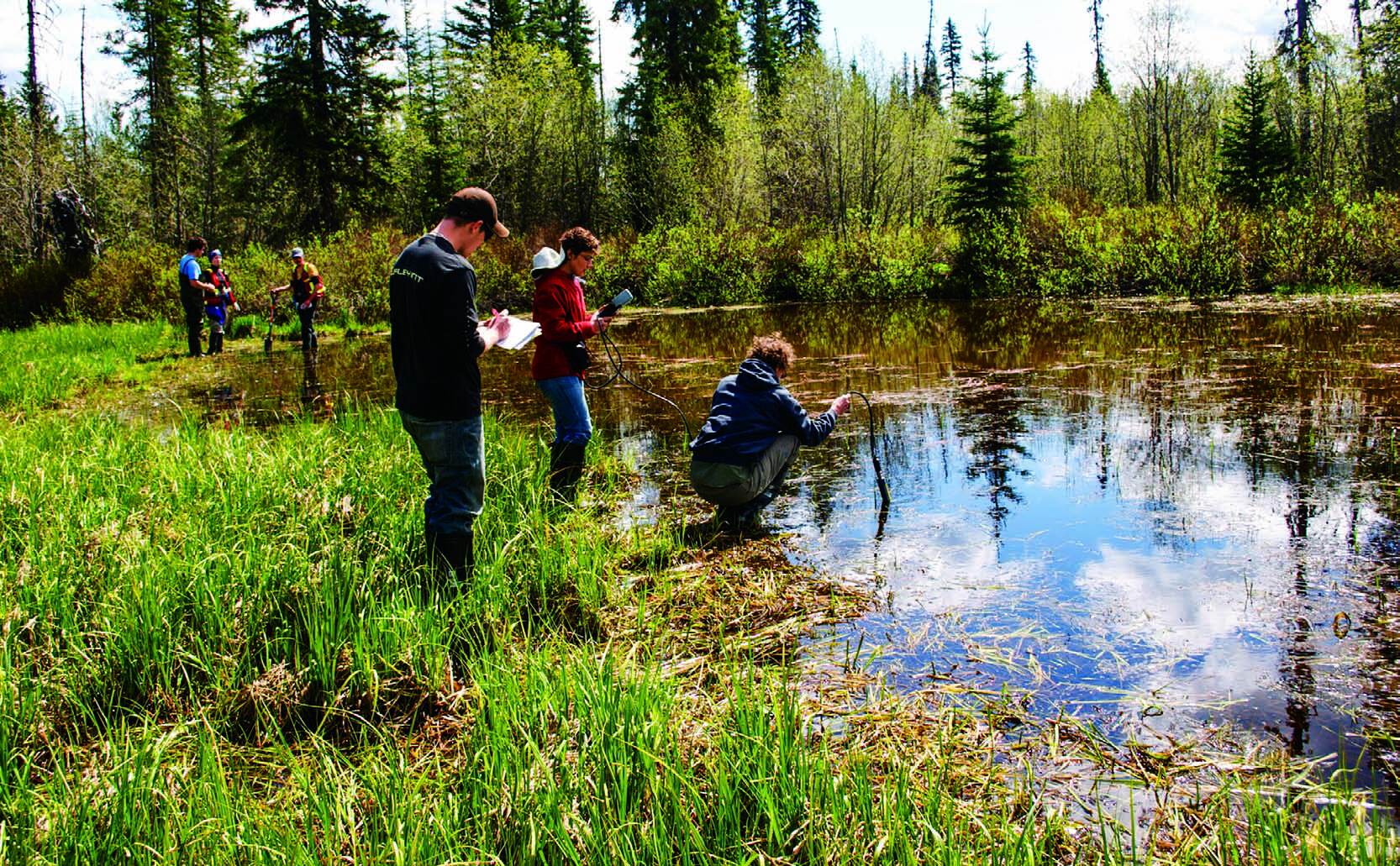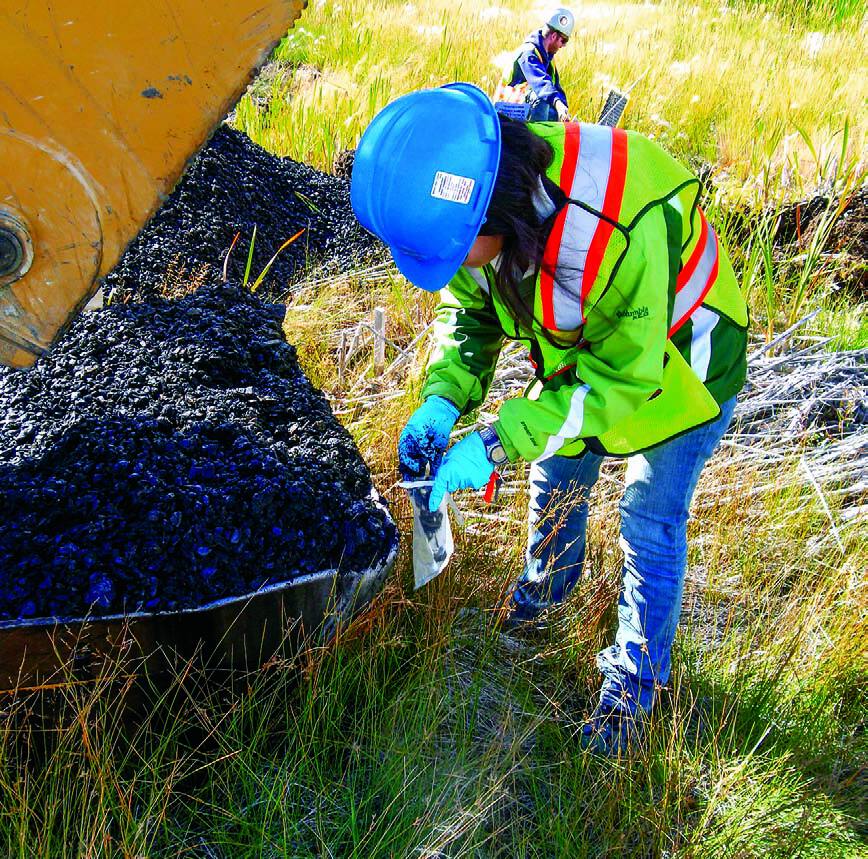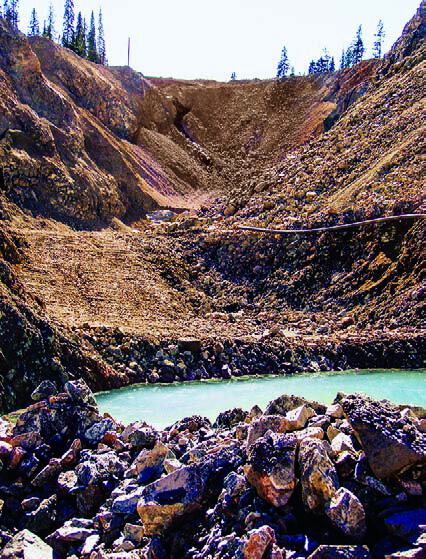
As B.C.’s mineral resource sector continues to flourish, and as more mineral deposits and gas reserves are found and developed, safety concerns remain paramount. In the mining industry, safety precautions around groundwater contamination are of particular concern: no one wants toxic compounds from mining operations flowing into fish-bearing streams and our waterways.
To ensure optimal safety levels, mining companies typically use chemicals to treat metal leaching and acid rock drainage. These treatments, while effective, are also highly expensive and produce their own waste byproducts – which must then be carefully contained for years to come. However, research here in B.C. is offering new options for an alternative way.
A natural approach
Many mining companies are beginning to invest more into bioremediation techniques to decontaminate mining wastewater. This innovative process uses naturally occurring microbes that live in and around mine sites to “digest” the toxic compounds and detoxify the contaminated water. In essence, the specialized organisms thrive on these toxic chemicals, integrating them into their metabolism and neutralizing toxicity.
Bioremediation has been around for years, yet we are still learning how these toxin-digesting microbes work, how to best exploit their unique capabilities and how to optimize them to work better in challenging environments. Susan Baldwin, PhD, a professor in the University of British Columbia’s Chemical and Biological Engineering Department, is helping move the science towards application – making bioremediation a more economical and accessible option – by applying genomics to harness these detoxifying biological processes.
How genomics is helping
Genomics is the study of the structure, function and inheritance of an organism’s DNA. Like a recipe, which is a set of cooking instructions, a genome contains all the instructions for making a particular organism. While bioremediation is not new, these genomic insights are. Genomics help us better understand the micro-organisms that grow in mine drainage sites, and how their genes interact with each other and with their environment.
The real benefit of applying genomics to bioremediation lies in the understanding we can gain of how complex microbial communities living together in mining wastewater function and, more importantly, how to make them flourish. In order for these microbes to function effectively and detoxify water, it’s imperative we know what sort of environment best fosters them – the type of nutrients, food sources and conditions that will maximize the growth and function of desirable microbes.
Tiny molecules, big problems

Baldwin and her team are working to discover microbes with particular abilities to treat a wide variety of waste streams, and to then develop bioreactors in which to grow and use these microbes. Microbes live in diverse environments, including those that are extreme with heavy amounts of toxic metals, strong acids, sulphurous compounds and other chemicals. Baldwin looks for microbes thriving in these harsh environments that can trans13-11-07 11:19 AM form mine-related toxic compounds into more benign forms. The challenge is learning about the conditions under which these microbes thrive and being able to replicate these in bioreactors that can be used by mining companies.
Another part of the research into bioremediation involves genomics scientists, mining experts and environmental remediation specialists tracking existing populations of micro-organisms, over time and in changing environmental conditions, monitoring and gauging their effect on the composition of the microbial community.
Industry connections

Through Genome BC-funded projects, Baldwin is currently working with two Association for Mineral Exploration BC corporate members – Teck Resources Limited and Imperial Metals – to gather the data on the micro-organisms that live and thrive in contaminated mine water and to find ways to apply this knowledge to help improve mining safety and quality.
The team is pioneering applications from a new field of genomics known as metagenomics, a technology in which Genome BC has already made significant investments. Metagenomics enables the study of genetic material recovered directly from environmental samples to understand communities of micro-organisms and how to optimize them for use in specific industries. For example, the water-quality project funded by Genome Canada and Genome BC, “Applied Metagenomics of the Watershed Microbiome,” uses metagenomics to assess environmental microbial communities in watersheds. Outcomes from this research project will develop tools for assessing water quality and the source of pollution in Canadian watersheds. This technology is also proving highly valuable in bioremediation efforts.
“Ultimately, I’d like to see more compact, possibly portable, systems that could be used close to the contaminated sites or by smaller mining operations on a limited budget,” says Baldwin. “We need new methods that enable companies to apply bioremediation at a lesser cost to them and for greater benefit to the environment.”
Genome sciences can also contribute to the development of novel exploration tools for geochemical prospecting. For example, species of micro-organisms known to be associated with specific ore bodies can be identified. Biologically mediated processes can be developed using genome-based technologies to assist in mineral extraction and to extract residual metals from waste that are currently disposed due to a lack of cost effective technologies for removal. Information gleaned from genomic analysis may also prove to be an important consideration for environmental studies of proposed mine sites.
Genome BC is continuing to catalyze genomics research in the mineral exploration and mining sector and would like to work with industry partners. Contact Gabe Kalmar, PhD, VP sector development, at [email protected].
